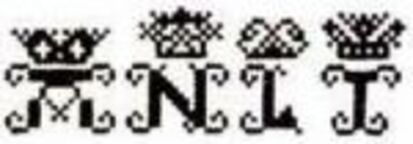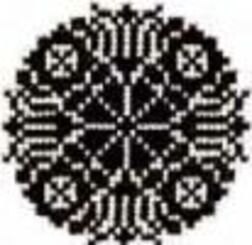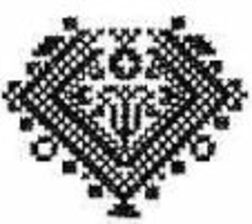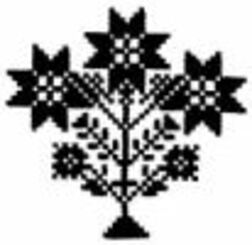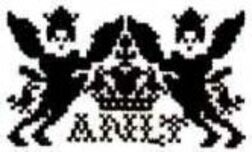ANLT 1831

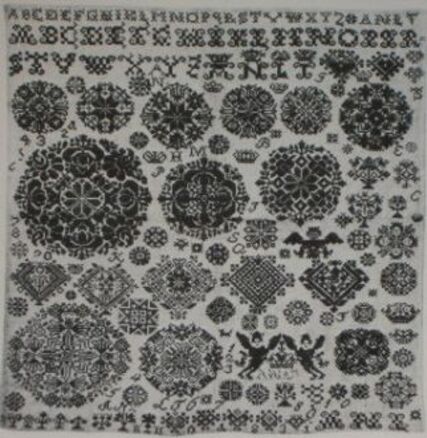
In the rural area of Vierlande in the southeast of Hamburg people felt particularly obliged to tradition in the past. The farmer and his wife decorated their property and proudly presented it on all important occasions of life such as birth, confinement, wedding, funeral. The Vierlande samplers brought together a variety of motifs of symbolic nature that were supposed to decorate a wedding pillowcase, a shroud, a bed of state, a show towel or garments in subsequent years.
The rosette – the circle – is regarded as a universal symbol of entirety, infinity, perfection and is still in use in the wedding ring, in the bridal wreath and in the funeral wreath.
The rhombus – lacking the top – symbolizes the female creative principle: the birth. It is – in representation of the vulva as well – a symbol of life of many goddesses of fertility in the folk art of a great number of nations. The “female rhombus” (lozenge?) turns into the “loving heart”.
The cross – the axis in a rosette – is often used for the “axis of the world” (earth’s axis), the allegory of Christianity, the salvation of mankind.
Various small motives have a figurative sense: birds facing each other – love, small trees – tree of life, angel – angel of death, bird of death.
The embroiderers’ names often are abbreviated behind the initial letter of the first two syllables, e.g. Trin-ke Kru-se: TRKS, Met-te Lüt-ten-see: MTLTS.
The original sampler is in the Schleswig-Holsteinisches Landesmuseum Schleswig. Many thanks to the staff members of the museum for sending me photos andfor their kind support.
Crosses: 258 x 296
Size: 37 x 42 cm
Stitches: Cross stitch, back stitch
